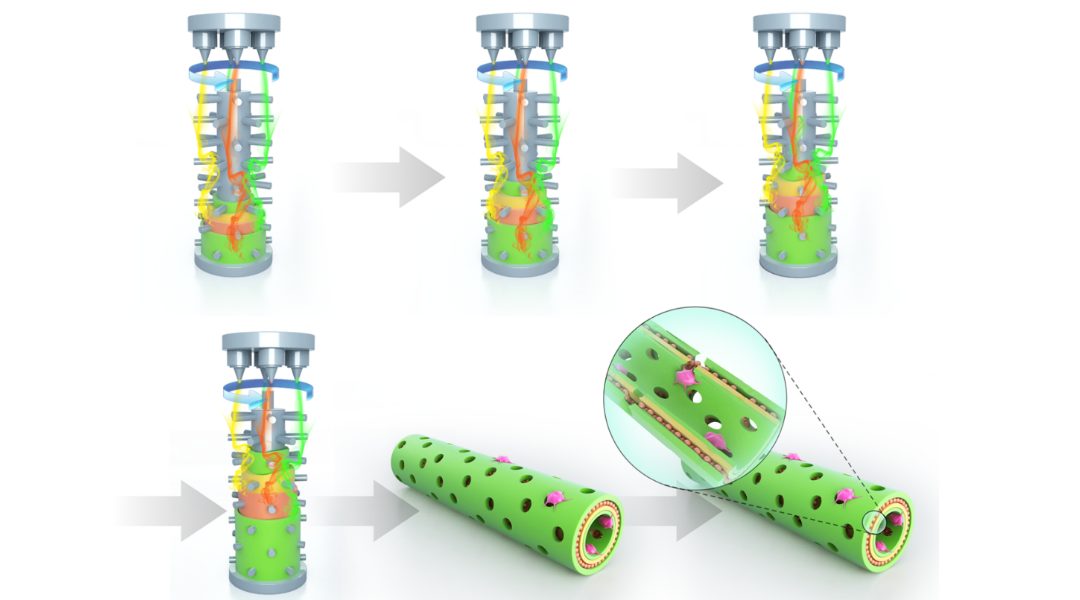Peripheral nerve injury impairs motor and sensory skills and requires advanced therapies to promote faster nerve regeneration. Nerve guidance channels are one promising alternative for the repair of large nerve gaps because of their biocompatibility, biodegradability, and electrical conductivity.
In their article in Advanced Functional Materials, Yuanming Ouyang, Weien Yuan, Cunyi Fan, and their co-workers from Shanghai Jiao Tong University design a novel nerve guidance conduit and evaluate its performance both in vitro and in vivo.
Dr. Yun Qian: “Gold, a kind of conductive material, is investigated widely concerning its potential role in promoting peripheral nerve repair. In the present study, a polydopamine-coated, gold polycaprolactone nanoscaffold is fabricated via a multilayer molding method and its proliferative, adhesive, and neurodifferentiation potential for bone marrow mesenchymal stem cells (BMSCs) and Schwann cells (SCs) in vitro is evaluated.”
The inner layer of the conduit was formed by spraying polydopamine (PDA) solution onto the surface of a rolling tube mold using a 3D printer. A solution of gold and polycaprolactone (PCL) was sprayed to form the middle layers, and more PDA solution was applied for the outer layer. The multiporous, multilayer structure enables free exchange of nutrients, water, and other biomacromolecules, enhancing the biodegradability of the conduit and promoting nerve regeneration.
Five different variations of the 15-mm conduit were constructed and connected to the sciatic nerve defect of Sprague-Dawley rats. The regenerated sciatic nerves were observed by transmission electron microscopy, revealing that nerve conduits loaded with bone marrow mesenchymal stem cells and Schwann cells showed significantly better results after 18 weeks than the PDA-gold/PCL nanoscaffold and PDA–PCL alone in terms of number and thickness of myelinated fibers.
To find out more about this gold-based nanoscaffold for treatment of peripheral nerve injuries, please visit the Advanced Functional Materials homepage.

















